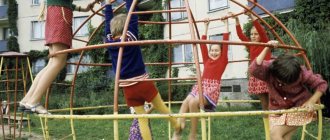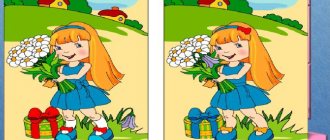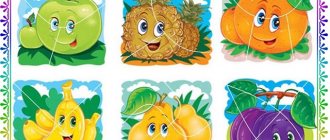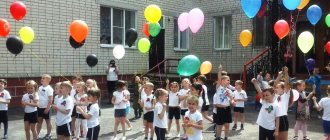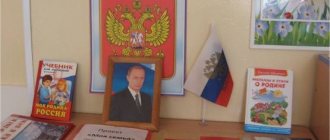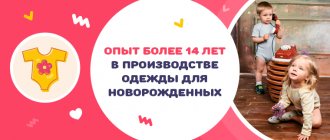What are folk traditions and customs?
Many families have their own traditions and customs. In one, for example, they always drink tea with lemon in the morning, and hot cocoa in the evening. And so every day. Another family may have different customs. For example, give each other handmade cards for the holidays.
Traditions and customs are characteristic not only of individual families, but also of entire nations. Some of them may seem stupid and funny, others - understandable and wise. The Slavic peoples have a very good tradition of giving up their seats in transport to the elderly. This seems normal to all of us. But the French do not do this.
Traditions of the peoples of the world for children
About 3 thousand different peoples and nationalities live on our planet. Each nation has its own special traditions. Some of them are very unusual for us Russians.
- When we say “yes,” we are used to nodding our heads. But the Bulgarians and Albanians do the opposite. To confirm what has been said, they wave their heads from side to side. A nod means "no."
- In Russia, the number 13 is considered unlucky, especially if it falls on a Friday. Such a day is jokingly called “the day of evil spirits.” In Spain, troubles await not on Friday, but on Tuesday the thirteenth. In some countries, six is considered an unkind number. In China it's a four. Some houses there don't even have a fourth floor. After the third comes the fifth.
- Men in Russia greet by shaking hands. And this is also an ancient custom. This is how our ancestors showed each other that they did not have weapons or stones in their hands. Handshakes are not accepted in Japan. They are replaced by bows. In India, as a sign of greeting, the palms are raised to the chin, as if for prayer, and, shaking the head, they say “namaste”. Eskimos rub noses when they meet. Because of the cold, only their faces are exposed.
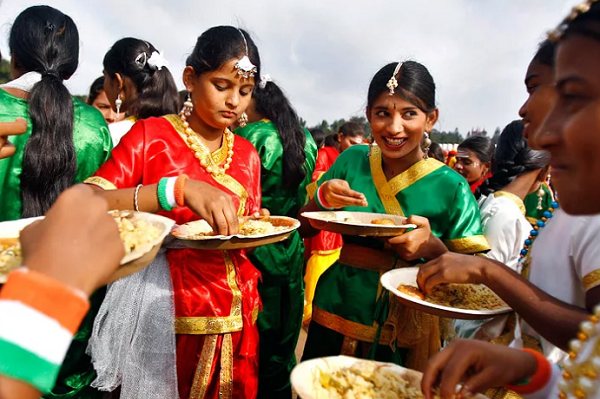
Traditions and customs related to children
There are many traditions associated with the birth and raising of children:
- Turkmen girls aged 9-10 undergo the ceremony of braiding their hair. They undo two braids and make 20 small braids. From this day on they are considered adults. The outfit also changes.
- The Kazakhs have a custom of “cutting fetters.” When the baby takes his first steps, his legs are tied with a cord. A respectable man with many children is entrusted to cut it. The ceremony is accompanied by songs and wishes to stand firmly on your feet and walk confidently through life.
- Indians throw their newborn children from a 15-meter tower. They fall onto the tent stretched below. People believe that after this the children become lucky.
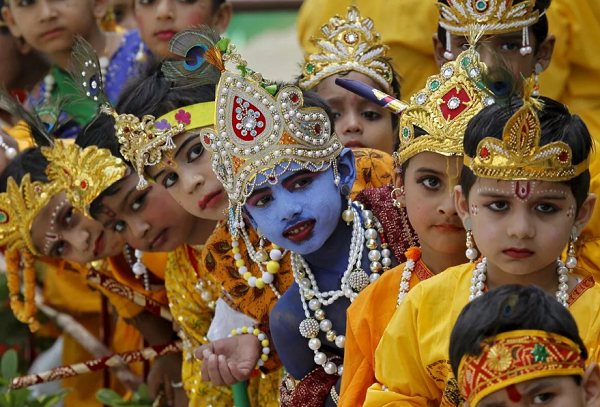
Eating
It is common for us to have breakfast and lunch while sitting at the table, and take food from a plate with a spoon and fork. But not everyone eats this way.
- The Chinese and some other eastern peoples use chopsticks instead of spoons and forks.
- Asians also eat while sitting on the floor or on low cushions.
- In India they eat with their hands. More precisely, with one hand - the right.
National dishes
Different nations have their own favorite food.
- Indian cuisine is distinguished by an abundance of different spices. Their dishes are very spicy. Indians prefer cereals, vegetables and fruits to meat.
- The Japanese eat mostly raw food. The basis of national Japanese cuisine is rice and sea creatures (shrimp, fish).
- The peoples of the Far North mainly eat meat. They hunt deer, seals, and walruses. Roots, berries and plant stems are also collected here.
- Italian cuisine is called one of the best in the world. Italians prepare delicious pasta - pasta and dumplings, which they call ravioli. This is also the birthplace of pizza.

Cloth
National clothing also belongs to the traditions of peoples.
- Women of the Middle East wear a strange attire for us - a dark and long burqa. Only the eyes remain open. It is not customary here for anyone to see even a part of a woman’s body.
- Indian women wear saris, long, colorful pieces of fabric intricately tied around the body. Putting on and wearing a sari is considered a real art.
- The Japanese national dress is kimono. It is very similar to a bright silk robe with a wide belt (obi). Kimono comes in women's, men's and children's sizes.
- Scottish men wear a kilt. This is a skirt. And part of the national costume of the Scots is a musical instrument - the bagpipe.
- Eskimos living in the Far North wear a kukhlyanka and high boots to keep warm from the severe cold. Special clothing is made from animal skins and fur.
- The national clothing of Greek men is also a skirt. It must be white, with 400 folds. On top is a snow-white shirt with puffy sleeves, a bright vest and a belt. Women dress up in a multi-layered suit with an apron, decorated with ringing coins.
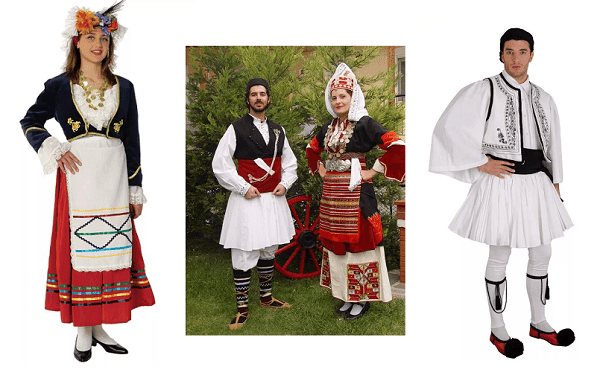
Report “Introducing children to the origins of Russian folk culture”
The problem of introducing children to the origins of Russian folk culture is one of the most pressing due to the fact that it is of great importance in the formation of the traditions of the Russian people, folk culture, and customs.
We live in interesting and difficult times, when we begin to look at many things differently, rediscover and re-evaluate many things.
First of all, this applies to our past, which we know very superficially.
What cared, pleased and worried the Russian people, what did they do, how did they work, what did they dream about, talk about and sing about, what did they pass on to their children and grandchildren? Answering these questions today means restoring the connection between times and returning lost values.
To do this, we turned to the sources of Russian folk culture and, first of all, folklore. After all, the content of folklore reflects the life of the people, their experience, sifted through a sieve of centuries, the spiritual world of the Russian person, his thoughts, feelings, experiences.
The relevance of this problem is also expressed in the need for our society to resist the negative phenomena of the social environment in which the younger generation is being formed.
In the “Federal Target Program for the Development of Education”
talks about the need to educate a cultural, creative personality,
able in the future to find its place in a complex, constantly changing reality, about the emergence of a need to educate the moral foundation of the younger generation.
Folk origins turned out to be the support for the formation of the foundations of morality, which took shape over centuries, and over the centuries was close and understandable to every Russian.
Folk art, as a part of material culture, has enduring moral, aesthetic, and educational value.
Absorbing the historical experience of many generations, it is of enormous importance for the development of personality. Works of folk art contain a special educational value that influences the formation of patriotic feelings.
The value of children's folklore lies in the fact that with its help an adult can easily establish emotional contact and emotional communication with a child. Interesting content, a wealth of imagination, bright artistic folklore images attract the child’s attention, bring him joy and at the same time have an educational effect on him. Getting to know children's folklore develops interest in folk singing, cultivates artistic taste, develops the child's speech, shapes his moral habits, and enriches children's knowledge about nature. Bright, original, accessible in form and content, catchphrases, sayings, and teases are easy to remember and can be widely used by children in games. They amuse the child and, at the same time, teach behavioral skills. The affectionate language of folklore works brings pleasure not only to children, but also to adults who use the figurative language of folk poetry to express their care and love. For a child, folk art is accessible and understandable, and therefore interesting.
We have set ourselves the following as the main goal of introducing children to the origins of Russian folk culture:
Study the culture of your native land more deeply and use your knowledge to introduce children to the origins of Russian folk culture;
To educate the personality of a child who has a basic culture, to form his cultural needs and emotional responsiveness.
Having defined the goal, we set ourselves specific tasks:
cultivate love for the Motherland, for the native land and its history
introduce to the culture and traditions of the Russian people, cultivate the best qualities inherent in them: hard work, kindness, mutual assistance, empathy
develop a respectful attitude when communicating with other children and adults
to teach to understand the role of the family, one’s place in the family, to raise future owners (mistresses)
form values for life
develop self-esteem as a representative of one’s people
develop children's creative and intellectual abilities, artistic taste
introduce a rich, imaginative native language
enrich children's speech, develop speech culture
to identify the effectiveness of using small folklore forms in different types of children’s activities.
And then there was painstaking work.
We tried to apply folk art material in the everyday lives of children. We picked up a series of nursery rhymes, jokes, finger games, riddles, proverbs, sayings, round dances, folk games and used them in working with children of the middle group in classes, in routine moments, dramatization of fairy tales, puppet and table theaters.
There were also difficulties, for example, there were no appropriate materials and aids, the surrounding reality did not provide the opportunity for children to really engage with folk culture.
This is where parents, grandmothers, and employees came to the rescue.
Together, we began to collect material for a corner of ancient Russian life. We made a portable stove (due to lack of space)
, placed household utensils, towels, towels, embroidery...etc.
Objects of folk applied art (Gorodets, Khokhloma, Dymka, Gzhel, etc.) were also placed here.
. This was due to the fact that it was in such an environment that I wanted to introduce children to folk crafts throughout Russia.
Now in the "hut"
They began to hold events to familiarize children with oral folk art and arts and crafts, to sing folk songs, ditties, and chants.
In the future, we will organize gatherings with tea drinking from a samovar and serving “larks”
etc.
Folk toys and games with them brought great joy to children. The bright matryoshka dolls were of particular interest. We tell the kids about the beauty, brightness, and features of the toy. We are gradually leading to an understanding of the concept of “folk toy”
. The older children got acquainted with its masters and the history of its origin. We introduce younger children to household items, their names, purposes, ways of working with them, and we explain historical continuity with modern analogues to older children. For example, a kerosene torch is an electric lamp, a cast iron roller is an electric iron.
In addition, we show the dependence of the use of objects on the way of life and on the place of residence (the poor - with torches, the rich - with candles; in wooded areas there are more wooden utensils, and in places rich in clay-clay)
.
The organization of such moments presupposes the activity of the children themselves, since they need to guess why this or that object was needed and how it was used. To help children, we make riddles, use proverbs and sayings.
We pay special attention to expanding the active vocabulary of children, taking into account the fact that often outwardly similar objects have different names (pot, jug, bench, stool..)
For greater accessibility (especially for kids)
oral folklore works,
a painted bed with a baby doll was placed the “hut” This is exactly how lullabies, nursery rhymes, and jokes are played out.
To interest children, we use the technique of the presence of a game character. These can be toy animals, most often found in folklore: a cat, a dog, a cockerel..., fairy-tale heroes, and puppet theater characters.
Of course, we definitely include surprise moments (a chest with fairy tales, guests have arrived, a magic chest...)
, game techniques
(going on a visit, overcoming various obstacles, traveling on different types of transport, helping a well-known character, preparing gifts for someone, transformations, etc.)
In order to introduce children to fairly complex concepts, for example , about the role of rituals and traditions in people’s lives, about the meaning of sayings and folk signs, we use an excellent technique - a dialogue between the teacher and the game character. The teacher plays a kind of connecting role between the children and the game character. The character, depending on the situation, can act as an expert who teaches children, or it can be the other way around - children teach a stupid or lazy, game or fairy-tale character. Educational problems are usually solved using such examples. The game character does not always behave in the best way: he can be capricious, disobedient, impolite. By teaching and reasoning with him and the teacher, children become established in positive behavior and methods of communication.
Holidays in different countries
There are holidays that are celebrated all over the world - New Year, birthday, wedding. And there are absolutely special ones.
- In Japan, one of the main holidays is Hinamatsuri, the “festival of dolls.” Every year on March 3, girls in elegant kimonos lower boats with paper dolls down the river. People believe that dolls take away sorrows and misfortunes with them.
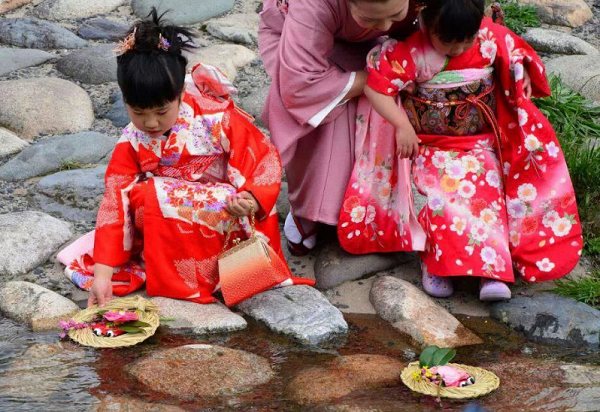
- India has its own holiday - the “monkey feast”. The monkeys are served a table full of goodies. This is how Hindus worship the god Rama and his monkey army. The arrival of spring is celebrated here with a festival of colors, during which people douse each other with water painted in bright colors.
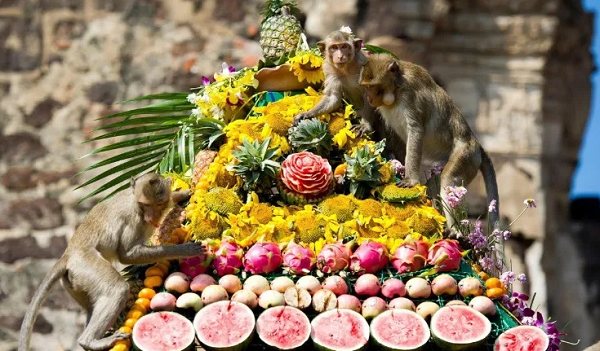
- Scotland hosts a very spectacular fire festival. In the evening, people dress in national costumes and carry burning torches to traditional music.
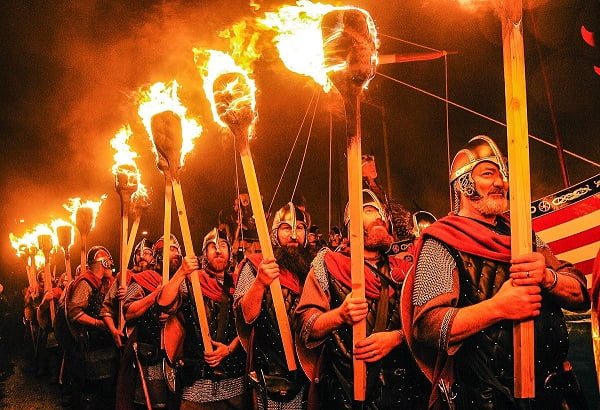
New Year
Celebrating the New Year is one of the most long-awaited customs for children. On the night from December 31 to January 1, it is celebrated in almost every home. Briefly about New Year's traditions of different nations:
- In Russia, gifts are given to children by the kind Grandfather Frost in a long fur coat with a magic staff in his hand. He has a granddaughter, Snegurochka, and a wife, Zima. He lives in Veliky Ustyug.
- In Poland, instead of Father Frost, children are congratulated by Saint Nicholas. He rides a horse and wears a white robe. His assistant, Peter, helps deliver the gifts. Only obedient children receive them. The spoiled are given the rod.
- Canadian children are waiting for Santa Claus on New Year's Day. He rides through the air in a team of reindeer and enters the house through a chimney. His home is in Lapland. There he makes gifts all year long with the elves.
- In France, Pierre Noel comes to the children on New Year's Eve. He rides a donkey and puts gifts in shoes.
- Finnish Joulupukki is small in stature. On New Year's Day he is carried in a cart by a goat. All the child needs to do is whisper in a whisper what kind of gift he wants, and Joulupukki will definitely hear it. Other gnomes help the old gnome.
- In Italy, Santa Claus is a woman who looks very much like a witch. Her name is Befana. In fact, Befana is kind, even though she rides around on a broom. She has a golden key with which she can open any door. On New Year's Day, she flies up to children's stockings and fills them with gifts.
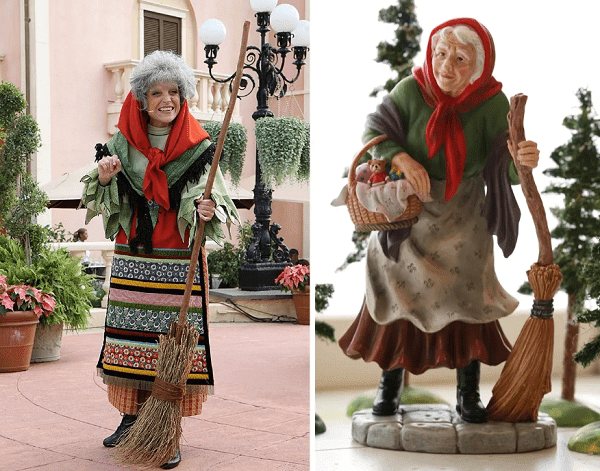
Traditions of the Russian people for children
Our country is Russia. It is the largest in the world. The Russian people have many interesting traditions and customs:
- Our ancestors have long lived in wooden huts made of logs - hewn tree trunks.
- The boys' costume consisted of a long shirt, trousers and a cap. Instead of the usual shoes, they wore bast shoes woven from tree bast.
- Russian girls wore a sundress down to their toes over a shirt, and decorated their heads with a kokoshnik.
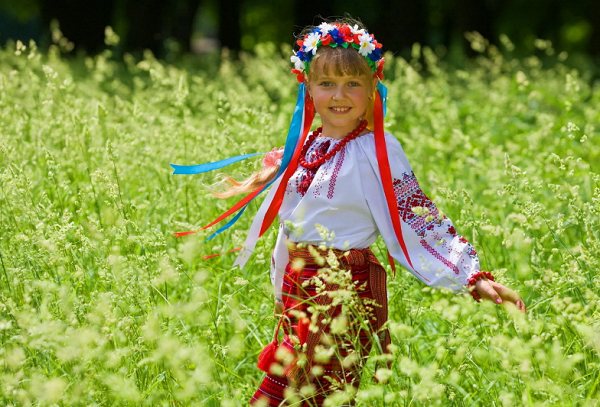
- Hospitality is one of the main traditions of the Russian people. Guests in Rus' were always welcome. The hosts greeted guests at the door and treated them to bread and salt.
- The holidays of our people are closely related to religion. On Easter, all homes bake Easter cakes, paint eggs and rejoice at the resurrection of Jesus Christ. “Christ is risen” - “truly risen” they say to each other. On Maslenitsa they eat pancakes all week, and on the last day they burn an effigy of winter. This is how Russians have celebrated the arrival of spring for hundreds of years.
- National dishes of Russia are pies with all kinds of fillings, cabbage soup, and porridge. Vegetables (turnips, cabbage, peas), as well as mushrooms and berries are especially held in high esteem. Drinks in Rus' have long been preferred: sbiten and kvass.
Presentation:
You might think that every nation has its own country: the Japanese have Japan, the Mexicans have Mexico, the Russians have Russia. In fact, this is not always the case. Several peoples can live in one country. If we talk about our country, then there are as many as 190 nationalities living in it: Tatars, Ukrainians, Bashkirs, Armenians, Kazakhs, Kyrgyz, Belarusians and many others.
MASLENITSA
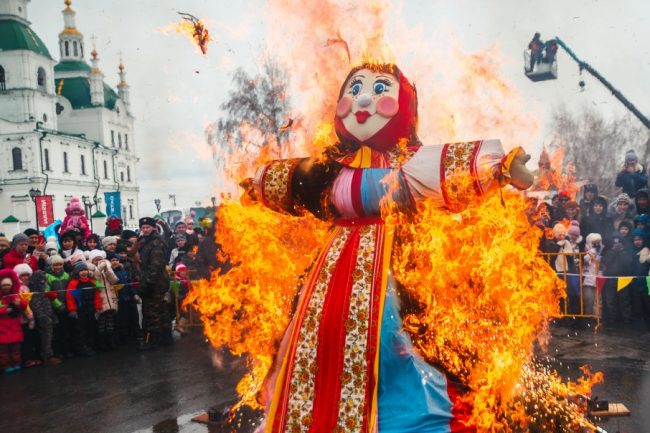
What did you do on Maslenitsa?
A significant part of the customs for Maslenitsa, one way or another, was connected with the theme of family and marriage relations: newlyweds who got married during the past year were honored at Maslenitsa. The young people were given a kind of viewing party in the village: they were placed at the gate posts and forced to kiss in front of everyone, they were “buried” in the snow or showered with snow on Maslenitsa. They were also subjected to other tests: when the young people were riding in a sleigh through the village, they were stopped and thrown with old bast shoes or straw, and sometimes they were given a “kissing party” or “kissing party” - when fellow villagers could come to the house of the young people and kiss the young woman. The newlyweds were taken for rides around the village, but if they received a bad treat for this, they could take the newlyweds for a ride not in a sleigh, but on a harrow. Maslenitsa week also took place in mutual visits of two recently intermarried families.
This theme is also reflected in specific Maslenitsa customs dedicated to the punishment of boys and girls who did not get married during the past year (in fact, who did not fulfill their life purpose). Similar rituals became widespread in Ukraine and in Slavic Catholic traditions. For example, in Ukraine and in the southern Russian regions, the most famous custom was “pulling”, or “tying” a block, when a guy or girl was tied to a “block” - a piece of wood, a branch, a ribbon, etc. - and forced to walk with it for some time. To untie the block, the punished were paid off with money or treats.
The most important day of Maslenitsa week was Sunday - the ritual before the start of Lent. In Russia, this day was called Forgiveness Sunday, when close people asked each other for forgiveness for all the insults and troubles caused to them; in the evenings it was customary to visit cemeteries and “say goodbye” to the dead.
The main episode of the last day was the “farewell to Maslenitsa,” often accompanied by the lighting of bonfires. In Russia, on this day they made a stuffed Winter from straw or rags, usually dressed it in women's clothing, carried it through the entire village, sometimes placing the stuffed animal on a wheel stuck on top of a pole; leaving the village, the scarecrow was either drowned in an ice hole, burned, or simply torn into pieces, and the remaining straw was scattered across the field. Sometimes, instead of a doll, a living “Maslenitsa” was carried around the village: a smartly dressed girl or woman, an old woman or even an old drunkard in rags. Then, amid shouts and hoots, they were taken out of the village and dropped there or dumped in the snow (“held Maslenitsa”).
It should be noted here that the concept of the “Effigy of Maslenitsa” is somewhat erroneous, since in reality the effigy of Winter was made, rolled, seen off and burned, but since this action took place on Maslenitsa (that is, a holiday), the effigy is very often mistakenly called Maslenitsa, although this is not true.
Where scarecrows were not made, the ritual of “farewell to Maslenitsa” consisted mainly of lighting communal bonfires on a hill behind the village or near the river. In addition to firewood, they threw all sorts of old things into the fires - bast shoes, harrows, purses, brooms, barrels and other unnecessary things, previously collected by children throughout the village, and sometimes stolen specifically for this. Sometimes they burned a wheel in a fire, a symbol of the sun associated with the approaching spring; it was often put on a pole stuck in the middle of the fire. Among the Western and Southern Slavs, the Russian “Maslenitsa” corresponded to Zapust, Mensopust, Pust and some other characters - stuffed animals, whose “farewell” ended the Maslenitsa week. In the central regions of Russia, “farewell to Maslenitsa” was accompanied by the removal of fast food, symbolizing Maslenitsa, from the cultural space. Therefore, in bonfires they actually sometimes burned the remains of pancakes and butter, and poured milk into it, but more often they simply told the children that all the quick meals were burned in the bonfire (“the milk burned and flew to Rostov”). Some customs were addressed to children and were supposed to frighten them and force them to obey: in the Nizhny Novgorod region, on the last Sunday of Maslenitsa week, a pole was installed in the center of the village, onto which a man with a broom climbed and, pretending to beat someone, shouted: “Don’t ask.” milk, pancakes, scrambled eggs.” Farewell to Maslenitsa ended on the first day of Lent - Clean Monday, which was considered a day of cleansing from sin and savory food. Men usually “rinsed their teeth”, i.e. they drank vodka in abundance, supposedly in order to rinse the remnants of the meager food out of their mouths; in some places, fist fights, etc. were organized to “shake out the pancakes.” On Clean Monday they always washed in the bathhouse, and women washed the dishes and “steamed” dairy utensils, cleaning them from fat and remnants of the milk. Other customs and entertainments of Maslenitsa week included mummers (in Russia, mummers accompanied a stuffed Maslenitsa), driving a “goat” or “goat” (eastern Ukraine), fist fights and ball games (sometimes very cruel and ending in injury), cock and goose fights , swings, carousels, youth parties, etc.
Tatar traditions for children
The Tatars live side by side with us. They are a people with a unique culture. This video will help tell you about the traditions of the people:
- Tatars are very kind to their family and homeland. They are proud of their origin and honor the traditions of their ancestors.
- They greet each other with both hands, saying the greeting: “Aassalaam aleikem! Aleikem assalam."
- In order to gather at one table, the Tatars do not need a big reason. They often visit each other. Definitely with hotels. The hosts also give small gifts.
- “The tea table is the soul of the family,” the Tatars say. Tea drinking is one of the most important traditions for them. Several generations gather around a large table and drink freshly brewed hot tea from small cups.
- The cuisine of the people is very diverse. A Tatar lunch can consist of 18 dishes with different flavors. Before and after meals, Tatars pray. The most famous national dishes of the Tatars are the sweetness of chak-chak and echpochmak (a triangular pie filled with fatty meat, onions, potatoes and eggs).
- The Tatar national costume is a long shirt decorated with embroidery, lace, and ribbons. For men it is knee-length, for women it is to the heels. Part of the costume includes boots made of soft leather with bright patterns. They are called chitek or ichigi.
- Tatars always wear a headdress or even several. A small cap - a skullcap - is put on the top of the head, and a hat or turban is placed on top of it. Older women wear a headdress that covers not only the head, but also the neck, as well as part of the back.
- The national holidays of the Tatars Nardugan, Navruz Bayram, Kurban Bayram, Sabantuy are associated with agriculture and religion. For example, Sabantuy is held after sowing. All girls and boys dress up in ceremonial national costumes and organize mass celebrations. They dance with all their hearts, sing loudly, compete, showing dexterity and strength. The most important competition is “koresh” belt wrestling. The winners receive gifts - a rooster in a cage, boots or something else.
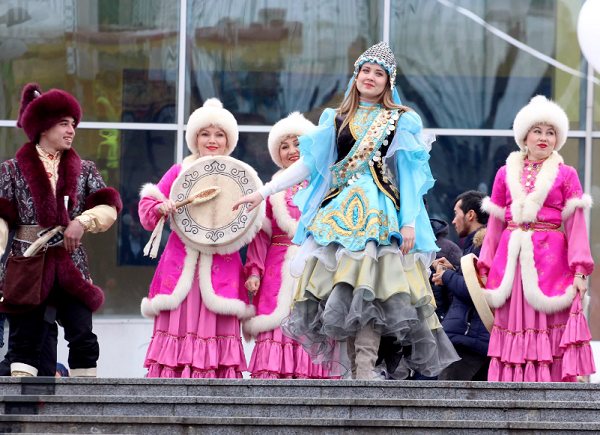
EASTER CHRISTIAN

Easter celebrates the resurrection of Jesus Christ. It is the most important holiday in the Christian calendar.
Easter Sunday does not fall on the same date every year, but always occurs between March 22 and April 25. It falls on the first Sunday after the first full moon following March 21, the vernal equinox. The date of Easter Sunday was approved by the church council in Nicaea in 325 AD.
The name “Easter” is a direct transfer of the name of the Jewish holiday, celebrated annually for a week, starting from the 14th day of the spring month of Nissan. The name “Easter” itself is a Greek modification of the Hebrew word “pesah”, which was interpreted as “passing”; was borrowed from the more ancient pastoral custom of celebrating the transition from winter to summer pastures.
The death and resurrection of Christ coincided with the holiday of Easter, and He Himself was likened to an innocent lamb, slaughtered according to custom before the beginning of this holiday. Christians honored Sunday as the day of the Resurrection of Christ.
The events of the gospel history coincided with the Jewish holiday of Passover; they were close in time of celebration.
The calculation of the time of Easter celebration is currently carried out in most Christian denominations according to the lunisolar calendar.
Russian Easter is also characterized by a number of traditions, such as decorating tables with blessed Easter cottage cheese and Easter cakes. Cottage cheese Easter is made in the form of a truncated pyramid - a symbol of the Holy Sepulcher. On its sides are depicted the instruments of Christ’s suffering: a cross, a spear, a cane, as well as symbols of the resurrection: flowers, sprouted grains, sprouts, the letters “H.V.”
But the most important culinary masterpiece of the table has always been the Easter cake consecrated in the temple, which is like a homemade Artos, which is an obligatory symbol of the Easter service. Artos is a complete prosphora, a large bread with an image of a cross, which recalls the sacrificial death of the Savior in atonement for the sins of mankind. The artos is placed on a lectern in front of the iconostasis and stands until the end of Holy Week, and then is divided into small pieces and distributed to believers in the temple.
Belarusian traditions for children
Belarusian, Tatar and Russian traditions are similar in many ways. It’s not for nothing that these peoples are called fraternal.
- Just like the Tatars, Belarusians celebrate the end of sowing. Only the holiday here is called Dozhinki. The best workers are chosen and gifts are given to them. There is also a special national holiday in Belarus. This is “Gukanne Viasny”. At the beginning of April, people call for spring. They make figures of storks from dough and paper and decorate houses and trees with them.
- A good reputation is very important for Belarusians. Therefore, they almost never swear, do not deceive, and, moreover, do not fight.
- The national Belarusian costume is made of white fabrics. For men, this is an embroidered shirt with a slit on the chest, a colored belt, and canvas pants. Along with a shirt, women wear a plaid skirt, an apron and always a bright sleeveless vest. The heads of Belarusian women are decorated with fabric headbands or wreaths.
- Many people associate Belarus with potatoes. Many national dishes are prepared from it - potato pancakes, potato babka, sorcerers. The latter look like meat pies. Only their shell is not made from dough, but from the same potatoes.
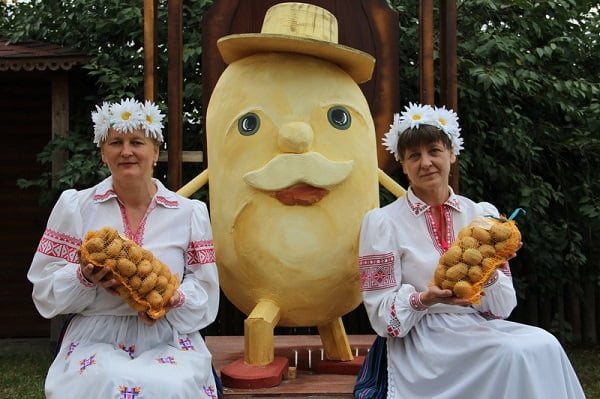
Kazakh traditions for children
The people of Kazakhstan honor the traditions and customs of their ancestors like no other. They treat this as a sacred duty.
- The warmth and hospitality of the Kazakhs has no equal. They will let even their enemy into the house and feed them. Moreover, they will serve him all the most delicious things that can be found in the house. And travelers who bring good news will also be given a gift.
- The national food in Kazakhstan is horse and lamb dishes (kazy, shuzhuk, zhaya, beshbarmak), homemade noodles, and pilaf.
- Kazakh children are taught respect for elders, restraint and integrity from an early age.
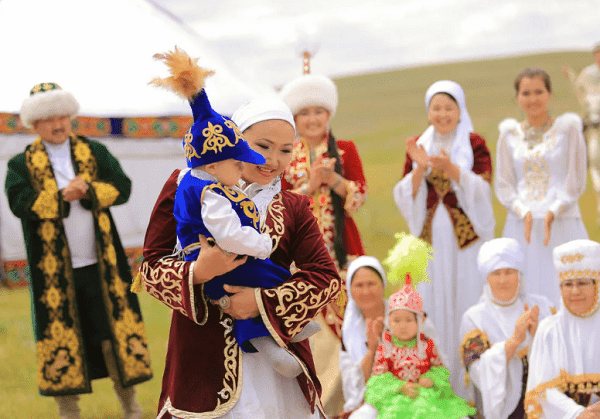
- Asar is a tradition of the Kazakh people, which consists of doing everything together. To build a house, they can call friends, neighbors, and relatives. They help each other for free. Asar is a reason for everyone to get together and strengthen their relationships.
- One of the oldest customs of the Kazakhs is to roll a person who has lived away for a long time into the ground. Its meaning is reflected in the proverb “we are all children of our native land.”
- The coming of spring, Nauryz, is considered a big holiday here. It is celebrated on March 22. All the people get up at dawn and plant trees. Then celebrations begin with songs and competitions. Among them are competitions for solving riddles, singing songs, reading poetry and tongue twisters.
- Kazakh costumes are some of the most beautiful in the world. They are richly decorated with embroidery, swan feathers and down, gold and silver thread. Dresses, vests, and hats come in a wide variety of designs. A day would not be enough to describe them all.
Nowadays, the life of city residents in different countries is not much different. People wear similar clothes, eat a variety of foods, and celebrate holidays other than their own. But this does not mean that the traditions and customs of our ancestors are forgotten. People dress in national clothes on special occasions, perform rituals, and tell children about them. This is how the culture of the people, their soul, lives.
Methodological development
Methodological development “Introducing children of senior preschool age to the origins of Russian folk culture”
“The Russian people should not lose their moral authority among other peoples - the authority deservedly won by Russian art and literature...
National differences will remain in the 21st century if we are concerned with the education of souls , and not just the transfer of knowledge"
D.S. Likhachev
Currently, the priority of folk pedagogy is increasing as a uniquely complex system, rooted in the origins of human development, containing humane ideas of the unity of man and nature, ethnic identity, stable guidelines for the formation of spiritual character traits and socio-cultural experience.
Psychological and pedagogical research raises the issue of introducing children to cultural values from preschool age. The revival of folk culture, its values, and their use in working with children is the most important direction in the modernization of preschool education, the development of the principle of cultural conformity in the upbringing and education of preschool children.
Time moves forward, picking up pace, setting new goals and objectives for us. We begin to look at many things differently, discover and re-evaluate something for ourselves. Unfortunately, we managed to lose what our grandparents saved for years, how did Russian people live, how did they relax and how did they work? What were you thinking about? What were you worried about? What holidays were celebrated? What did you pass on to your children, grandchildren, great-grandchildren? Will our children be able to answer these questions if we ourselves cannot always answer them? We must restore the connection of times, return lost human values. Without the past there is no future.
Thus, the rejection of the younger generation from Russian culture, from the socio-historical experience of generations, is one of the serious problems of our time. It is necessary to develop children's understanding of cultural heritage and cultivate a caring attitude towards it from preschool age. The need to introduce the younger generation to the national culture is interpreted by folk wisdom: “Our today, like our past once, also creates the traditions of the future.” Our children should know well not only the history of the Russian state, but also the traditions of national culture, be aware of, understand and actively participate in the revival of national culture.
Currently, in preschool pedagogy, the problem of the need to educate spirituality in our children based on the traditions of the Russian people has become urgent.
Why did I decide to work on this problem? Because when developing children’s ideas about man, I first of all turn to the history and culture of my own people. Ancient people said that for absolute happiness, a person needs a glorious Fatherland. One cannot but agree with this. But how now, in our modern life, can we instill in children devotion to the Fatherland, Russian traditions and customs, pride in their Motherland, and patriotism? To answer these questions means to restore the connection of times, to return values that were once lost. Raising a citizen and patriot who knows and loves his homeland cannot be successfully achieved without a deep knowledge of the spiritual wealth of his people and the development of folk culture.
Thus, we can conclude that the formulation of this problem is timely, and work on this problem is carried out in close cooperation with all participants in the pedagogical process.
While working on this problem, I set myself:
target:
the formation of a sustainable interest and familiarization of children with the origins of Russian national culture, laying the foundations of a spiritual and moral personality with an active life position and creative potential, capable of self-improvement and harmonious interaction with other people.
Tasks:
- To stimulate curiosity, a sense of beauty, and awareness of oneself as part of the great Russian people in the soul of every child;
- To promote the development of the best Russian character traits in children;
- Develop interest in native Russian traditions and crafts;
- Introduce us to the cultural experience of our ancestors: housing, household items, crafts.
- Introduce children to oral folk art and some types of art;
- Develop creativity, imagination, communication skills, cognitive activity;
- Use all types of folklore in this activity: games, fairy tales, songs, proverbs, sayings, nursery rhymes, chants, riddles, round dances;
- Develop speech, imagination, artistic taste, hand motor skills;
- To cultivate patriotic pride, a sense of respect for people, the Russian people;
- To assist parents in the revival and creative development of the best traditions of the centuries-old experience of raising children and to involve them in cooperation in creating a cozy, homely environment with a subject-development environment in the group.
Principles for selecting material content:
consistency, visibility, individuality, accessibility.
Forms of working with children.
GCD:
- on familiarization with the basics of Russian folk culture and life (introduce children to household items, Russian clothing, decoration of a Russian hut);
- on familiarization with the outside world (introduce children to folk subjects, family, kindergarten, Russian folk holidays in Rus', Russian customs and traditions);
- on familiarization with works of fiction (learn proverbs, sayings, nursery rhymes, read and tell fairy tales, act them out in theatrical activities)
- musical (introduce Russian folk instruments, sing Russian folk songs, dance in circles, perform the movements of Russian folk dances);
- in visual arts (decorative drawing, modeling) (learn to paint the sundress of the “Dymkovo young lady”, use elements of Dymkovo painting; straight and intersecting lines, dots, strokes, learn to sculpt Dymkovo toys and paint them, use Dymkovo painting techniques to decorate toys; rings, arcs, dots, strokes, stripes, circles)
Cultural and leisure activities:
- holidays, entertainment, theme nights, leisure.
Game activity:
- theatricalization.
- role-playing games.
- outdoor, folk games.
Methods and techniques:
verbal, visual, practical, game.
Verbal:
- reading fiction;
- memorizing poems, songs, nursery rhymes, chants, proverbs and sayings, making and guessing riddles;
- holidays, entertainment;
- conversations;
- consultations.
Visual:
- organization of photo exhibitions;
- information stands;
- theatrical activities;
- viewing illustrations, pictures, photographs;
- personal example of an adult.
Practical:
- creating a developmental environment that ensures a comfortable stay for a child in a preschool educational institution;
- creating conditions for the cognitive development and cognitive activity of the child;
- organization of productive activities.
Gaming:
- didactic, board and printed games;
- role-playing games;
- outdoor games;
- dramatization games, dramatization games;
The feeling of love for the Motherland is laid down in the process of life and existence of a person located within a specific sociocultural environment. From the moment of birth, people instinctively, naturally and imperceptibly get used to their environment, the nature and culture of their country, to the way of life of their people.
Folk culture
- this is the centuries-old concentrated experience of the people, materialized in objects of art, labor and everyday life: these are traditions, rituals, customs, beliefs; these are ideological, moral and aesthetic values that determine the face of a nation, its identity, uniqueness, its social and spiritual peculiarity.
Folk culture teaches us to love our native land, comprehend the beauty of nature, cultivate a reverent attitude towards all living things, contributes to the formation of the best human qualities and broadens the horizons of children.
Rituals, traditions, and customs accompanied every step of a person from birth to death, organizing his work, social and personal life.
Folk traditions
- these are historically established sets of educational and social experience, norms of behavior, social traditions passed on from generation to generation. Labor traditions of spiritual education accustomed children to systematic work, passing on all the skills, knowledge and abilities known in the peasant world, contributed to the formation of the habit of work, diligence, respect and respect for work, responsibility for the assigned work.
The rich arsenal of folk traditions, which was formed from the specific historical conditions of the development of the people, should be widely used. The cultural heritage of the people contains pedagogically valuable ideas and centuries-tested experience of education, which, as they develop, enrich world pedagogical thought. Therefore, the role of folk traditions in the education of children of senior preschool age is quite large. Folk art, being the custodian of historical memory, the direct bearer of original culture, the art of previous generations, reflects the pedagogical experience of the people, is the most important means of educating a harmoniously developed personality, the development of its moral, labor, aesthetic, and technological culture.
Russian folk traditions can be divided into several priority areas:
- Creating an atmosphere of national life.
- Traditional and ritual holidays.
- Russian folklore (fairy tales, songs, ditties, pestushki, proverbs, sayings, etc.)
- Russian folk art.
- Russian folk games.
Creating an atmosphere of national life
It is known that surrounding objects have a great influence on the formation of a child’s mental qualities - they develop curiosity, cultivate a sense of beauty.
Surrounding objects that awaken a child’s soul for the first time and instill in him a sense of beauty must be national.
This allows children from a very early age to understand that they are part of the great Russian people.
This can be achieved through the creation of a subject-developing environment in which there are many objects characteristic of Russian folk life. This and the equipment of a mini-museum of the life of the Russian people, the exhibits of which introduce children to the national culture, are used as demonstration material in classes and entertainment, in games in their free time under the guidance of a teacher.
In our kindergarten, we equipped a room in the form of a corner of a “Russian hut”, where we placed objects most often mentioned in Russian fairy tales: cast iron pots, jars, bast shoes, a spinning wheel, a samovar, homespun rugs - all those surrounding objects that first awaken a child’s interest , cultivating in him a sense of beauty and curiosity. This helps children understand that they are part of the great Russian people. Our museum is unconventional: the exhibits are not located behind glass and are not fenced with rope. Here you can touch everything, take a closer look, use it in action, play with it. All exhibits are authentic.
Unregulated activities in our museum bring great pleasure to children. Children enjoy using folk objects in role-playing games, playing didactic folk games, ritual and role-playing games, looking at illustrations, playing folk musical instruments, drawing, sculpting, and engaging in various types of folk and applied arts.
The group includes:
- Music corner - with folk musical children's instruments (accordion, tambourine, rattles, wooden spoons, drum).
- “Beauty Shelf” with objects of decorative and applied art and folk toys.
- Children's books - Russian folk tales, coloring books.
- Dressing corner - sundresses, skirts, aprons, caps, scarves.
- Theater corner - masks, dolls, table theater.
Only by touching real antiques do children feel that they belong to the history of their family. Only objects made by the hands of his distant ancestors will convey to the child’s consciousness ideas about life in the distant past.
Traditional and ritual holidays
Traditional festive and ritual culture is an integral element of folk culture.
Holidays have always existed, at all times, transforming in content and form, in accordance with the spiritual and aesthetic development of society. They carry a great emotional and educational load, ensuring the transmission of traditions from generation to generation.
The first type of rituals arose on the basis of agricultural life, which is why they are sometimes called “agrarian”. The second type is associated with the biological and social development of a person and reflects the main phases in his life (three forms of ritual: birth, wedding and funeral).
Ritual holidays are closely related to labor and various aspects of human social life. They contain the most subtle observations of people on the characteristic features of the seasons, weather changes, and the behavior of birds, insects, and plants. I believe that this folk wisdom, preserved over the centuries, should be passed on to children.
Holidays, matinees, and public events evoke the greatest emotional response in children. We hold holidays and entertainment such as Maslenitsa, Christmastide, and Christmas; “Curling the Birch Tree”, “Visiting Melania’s Grandmother”; New Year's matinees, fun sports competitions, Defenders of the Fatherland Day, folklore festival “Meeting of Spring”, autumn fair and others. Children's musical experience is enriched. We talk with children about folk songs, listen to soundtracks, and perform some songs at holidays and entertainment.
By joining folk and ritual holidays, children get the opportunity to learn the characteristic features of the life of their ancestors, the traditions of the Orthodox faith, as the basis of spirituality and morality. In addition to songs, children are introduced to dance elements. This is a round dance stomping
step, step with a stampede. Children especially enjoy playing folk musical instruments: spoons, bells, rattles.
I believe that the revelation of a child’s personality is fully possible only through his inclusion in the culture of his own people. And this is not just knowledge about culture, but living in culture, living in tradition, through entering the annual holiday circle. This helps children better navigate time concepts, understand the dependence of people’s activities on natural conditions, and remember names and concepts. The cyclical nature of the folk calendar repeats these holidays and events from year to year, helping children to assimilate this material, gradually complicating and deepening it. It has already become a good tradition in our kindergarten to celebrate the following holidays:
Christmas. At NOD I learn Christmas carols with the children, put on performances for them and tell them that Christmas time is a joyful time when you can share joy with others, help the weak, show cordiality, generosity and love. Together with the children we prepare Christmas gifts.
Farewell to winter - Maslenitsa is celebrated with funny jokes, games with buffoons, singing chants, treating children to pancakes and burning of Maslenitsa.
We definitely celebrate name days according to the seasons by congratulating children, making gifts, singing songs, leading round dances and drinking tea.
The Easter holiday involves making attributes, painting eggs and folk games.
Only together with all the employees of the preschool educational institution it is possible to convey folk wisdom, kindness, and humor in a form accessible to children. I have collected notes on activities, leisure time and holidays for children, and made a selection for the whole year of folk Orthodox holidays with names, folk signs and birthday people.
Parents are invited to participate in traditional folk festivals. A plan for working with parents was drawn up, including the following tasks: 1) To interest and involve parents in active participation in calendar holidays and entertainment. 2) Joint production of attributes and costumes for the holidays.
Russian folklore
Russian folk holidays and rituals are one of the most vibrant and original components of traditional artistic culture and at the same time one of the most complex and multifaceted phenomena of its earliest type - folklore.
Russian song folklore miraculously combines words and musical rhythm and melodiousness. Oral folk art reflects, like nowhere else, the traits of the Russian character and its inherent moral values - ideas about goodness, beauty, truth, loyalty, courage, and hard work. A special place in such works is occupied by a respectful attitude towards work and admiration for the skill of human hands.
The widespread use of folklore as a rich source of cognitive and spiritual and moral development of children is of great importance. The best character traits of a child are formed in preschool age through contact with the world of oral folk art.
In the “Russian Izba” we conduct thematic integrated classes to familiarize ourselves with the traditions, holidays and rituals of the Russian people, and also read and tell children Russian folk tales, nursery rhymes, proverbs, sayings, omens, and introduce folklore. In the environment of Russian life, a child quickly remembers fairy tales, nursery rhymes and nursery rhymes, proverbs and sayings, riddles, and folk signs.
In an integrated form: both in the classroom and in the process of children’s independent activities, the relationship between fine art and oral folklore (rhymes, songs, fairy tales, riddles) is realized. The task of familiarizing yourself with illustrations for works of oral folklore by the artist Yu. Vasnetsov is solved in interaction with visual activities and decorative modeling (sculpture of small forms). Children really like to independently make crafts for Dymkovo toys, products with elements of Khokhloma and Gorodets paintings. Immersing children in a diverse aesthetic environment through practical activities such as creating various crafts, jewelry, and studying folklore allows children to instill a sense of beauty.
Folklore is used both in games and in all routine moments, for example during morning exercises, when washing, after sleep, etc.
Nursery rhymes, jokes, and chants addressed to children sound like a gentle talk, expressing care, tenderness, and faith in a prosperous future.
In proverbs and sayings, various positions in life are aptly assessed, shortcomings are ridiculed, and the positive qualities of people are praised. A special place in introducing older preschoolers to works of oral folk art is occupied by composing riddles with children about objects of ancient Russian life.
Thanks to this, folklore works are a rich source of cognitive and moral development of children. The main task at this stage is to reveal the spiritual potential of the works and bring it to the child in an accessible form, to expand the children’s vocabulary through a semantic explanation of unfamiliar words.
Russian folk art
The people showed their creative aspirations and abilities only in creating objects necessary in work and everyday life. However, this world of utilitarian things reflected the spiritual life of the people, their understanding of the surrounding world - beauty, nature, people, etc.
Folk craftsmen did not literally copy nature. Reality, colored by fantasy, gave rise to original images. This is how fabulously beautiful paintings on spinning wheels and dishes were born; patterns in lace and embroidery; fancy toys.
Judging by the objects that have come to us from the depths of the distant past, people have always strived for beauty and creativity, decorating their home, everything that surrounded them in work and everyday life.
Folk fine art lives in everyday life, surrounds us, to this day. It is worth taking a close look at the objects around us, and we will find in them a lot of decorative and artistic things. We need to teach children to see this, skillfully draw their attention to the beauty of the things around us, and gradually the children themselves will follow this path.
Considering folk art as the basis of national culture, it is considered very important to introduce children to it. Children enjoy looking at patterns depicting fairy-tale birds and animals. They play games: “Guess whose silhouette?”, “Folk crafts”. Children really like to trace stencils: nesting dolls, Sirin birds, Dymkovo toys, etc., and then color them. The children enjoy sculpting, appliqué and designing.
The aesthetic significance of children’s communication with works of folk art, with the process of making necessary and useful things in life, the ability to create them, is important for the overall development of children, for instilling in them a healthy moral principle, respect for work, and the development of artistic taste using the best examples of this art.
Creative activity instills in children sincere feelings of love for the world around them, respect for work, and interest in their native culture. Engaging in productive activities brings special joy and benefits to children; develop memory, creative imagination and artistic taste.
Russian folk games
Folk games stimulate the activity of thought, help broaden one’s horizons and clarify ideas about the world around us. In addition, they improve all mental processes: attention, memory, imagination, thinking, and subsequently influence self-awareness.
They are very valuable from a pedagogical point of view: they are varied, require a lot of movement, resourcefulness, ingenuity, and provide the opportunity to master physical skills and abilities. Games influence the development of mental abilities, the formation of character, will, and cultivate moral qualities.
Folk games, unfortunately, have almost disappeared from childhood today, although it is in them that the joy of movement is combined with the spiritual enrichment of children. By forming in children a stable attitude towards the culture of their native country, creating an emotionally positive basis for the development of patriotic feelings, folk games contribute to the development of conscious discipline, perseverance in overcoming difficulties, and teach them to be honest and truthful.
Russian folk games attracted my attention not only as a genre of oral folk art. The enormous potential they contain for the physical development of a child prompted me to introduce folk games into the organization of children’s motor activity. Games develop dexterity, speed of movement, strength, and accuracy. Learned counting rhymes and tongue twisters make the game process more interesting and exciting.
I have developed a card index of folk games for children by age; a system of joint activities for adults and children to introduce Russian folk games. I use folk games using folklore during morning exercises, physical education classes, while walking, and during ritual holidays.
Play has always been a natural companion in a child’s life, a source of joyful emotions and has great educational power.
In children's games, echoes of ancient times and the realities of a bygone way of life have been preserved. For example, various games of “hide and seek” are a reflection of ancient methods of raising children, when there were unique schools of training for battles and hunting. The folk game has the same enduring significance as folk poetry, fairy tales, and legends. The meaning of the folk game is that it develops the child’s social behavior skills.
Folk games have a lot of humor, jokes, and competitive fervor. Children love funny counting rhymes, which sometimes consist of meaningless words and consonances. Their meaninglessness is explained by the fact that they came from adult folklore. But adults forgot about the mysterious counting, and children continue to use it in counting rhymes to this day.
Thus, play occupies an important place in a child’s life. Thanks to it, children learn to independently find a way out of a critical situation, quickly make decisions, implement them, that is, they acquire important qualities they need in their future life. An effective type of play practice in our kindergarten has become the toy library, which involves learning folk games with different developmental orientations. Children get acquainted with joke games, competition games, trap games, imitation games, and master the traditional component of games - choosing a driver by counting, drawing lots or by conspiracy.
The game library also includes homework aimed at developing interest in folk games. For example, find out what games parents and older adults played, learn these games and teach others. Game workshops are held both indoors and during walks, organized during classes, and during holidays. Children are especially interested in toy libraries united by one plot, for example, “winter games” - games with snow (snowballs, building snow forts, taking them). Another option for the game library is competition, when folk sports-type games are selected, or holding tournaments using Russian folk games.
Folk games help to introduce children not only to the gaming practices of the people, but also to folk culture in general. The joy of movement during play is combined with spiritual enrichment, children develop a stable, interested, respectful attitude towards the culture of their native country, an emotionally positive basis is created for the development of civic and patriotic feelings, for the formation of relationships with peers and adults.
Thus, my in-depth, comprehensive, systematized work to introduce children to the origins of Russian folk culture has positive results. The results of the work carried out to familiarize children with Russian folk culture are the positive dynamics of indicators of the quality of education and upbringing.
Kindergarten students:
- They use nursery rhymes, counting rhymes, and riddles in active speech.
- They know how to play Russian folk outdoor games using counting rhymes.
- They have a rich knowledge of fairy tales and fairy-tale characters, and are able to recognize them in works of fine art.
- Meaningful and active participation of children in Russian folk holidays (they know the name of the holiday, sing songs, perform ditties, read poetry)
- Knowledge of the history of Russian costume and headdresses.
- Use the attributes of Russian folk culture in independent activities.
- They treat household items and works of folk art with care.
Particular attention is paid to strengthening ties with parents. Parents have a positive attitude towards the work on the problem of “Introducing children to the origins of folk culture.” They are active participants in replenishing the developmental environment and take direct part in a variety of events (entertainment, holidays, activities).
In the corners for parents, material on the folk calendar, Russian cuisine, folk holidays “Easter”, “Christmas”, “New Year”, “Maslenitsa”, etc. is constantly placed.
Together with the parents, the group held exhibitions:
- "Autumn Fantasy"
- "Beauty will save the world"
- "Gift to Santa Claus"
- “Here they are - golden hands”
Consequently, parents realized that they are raising their children by their own example, that every minute of communication with a child enriches him, shapes his personality, that not a single educational or educational task can be solved without fruitful contact between parents and teachers.
An invaluable contribution to the development of children’s moral and patriotic abilities is made by interaction with society: the rural library, the House of Culture (there is a rural mini-museum of Russian life here).
So, folk traditions play an important role in the educational process of a child. After all, it is in them that spiritual foundations and norms accepted in society accumulate. The system of folk traditions and customs is one of the effective means of education, as it provides a mechanism for transmitting norms of behavior, cultural and spiritual values from one generation to another.
A person is not born in a rich spiritual and moral sense, therefore, competent external influence from educators, parents and the entire environment is needed. The ultimate goal is to educate a humane, spiritual and moral personality, worthy future citizens of Russia, who respect the national culture, traditions and customs of the Russian people.
Literature:
- Childhood. Program for the development and education of children in kindergarten. – St. Petersburg: “CHILDHOOD-PRESS” 2004.
- Zelenova, N.G., Osipova, L.E. We live in Russia. Civic-patriotic education of preschool children. (Senior group.) - M.: Publishing house "Scriptorium 2003", 2008.
- Mulko, I.F. Development of ideas about man in history and culture: Methodological manual for preschool educational institutions. – M.: Sphere shopping center, 2009.
- The system of patriotic education in preschool educational institutions. / Authors-compilers E.Yu. Aleksandrova and others - Volgograd: Uchitel Publishing House, 2007.
- Where does the Motherland begin? Experience in patriotic education in preschool educational institutions / ed. L.A. Kondrykinskaya. - M.: Sphere shopping center, 2005.
prepared by teacher: Gulyaeva G.N.
| Group "Znayki" |
